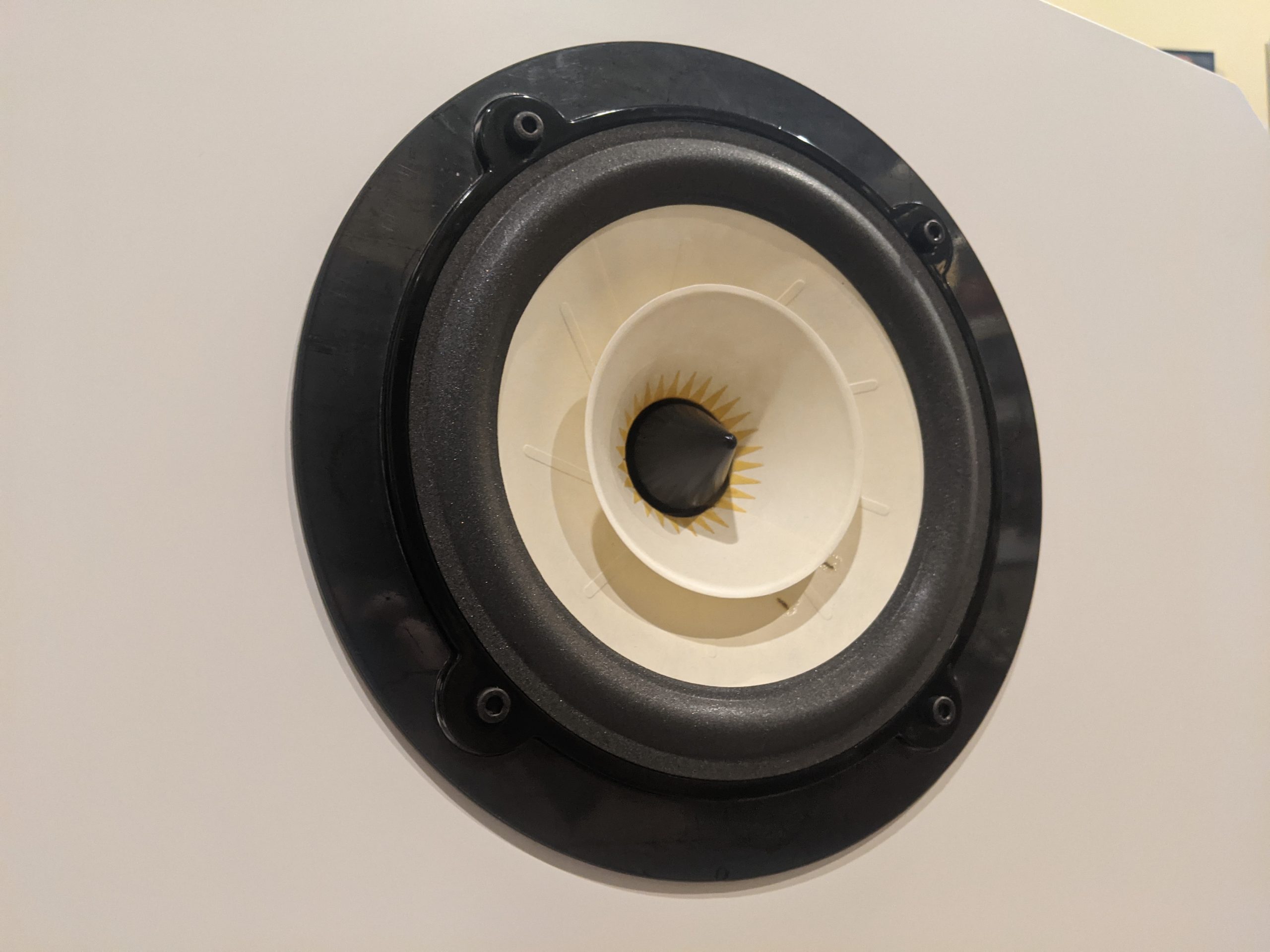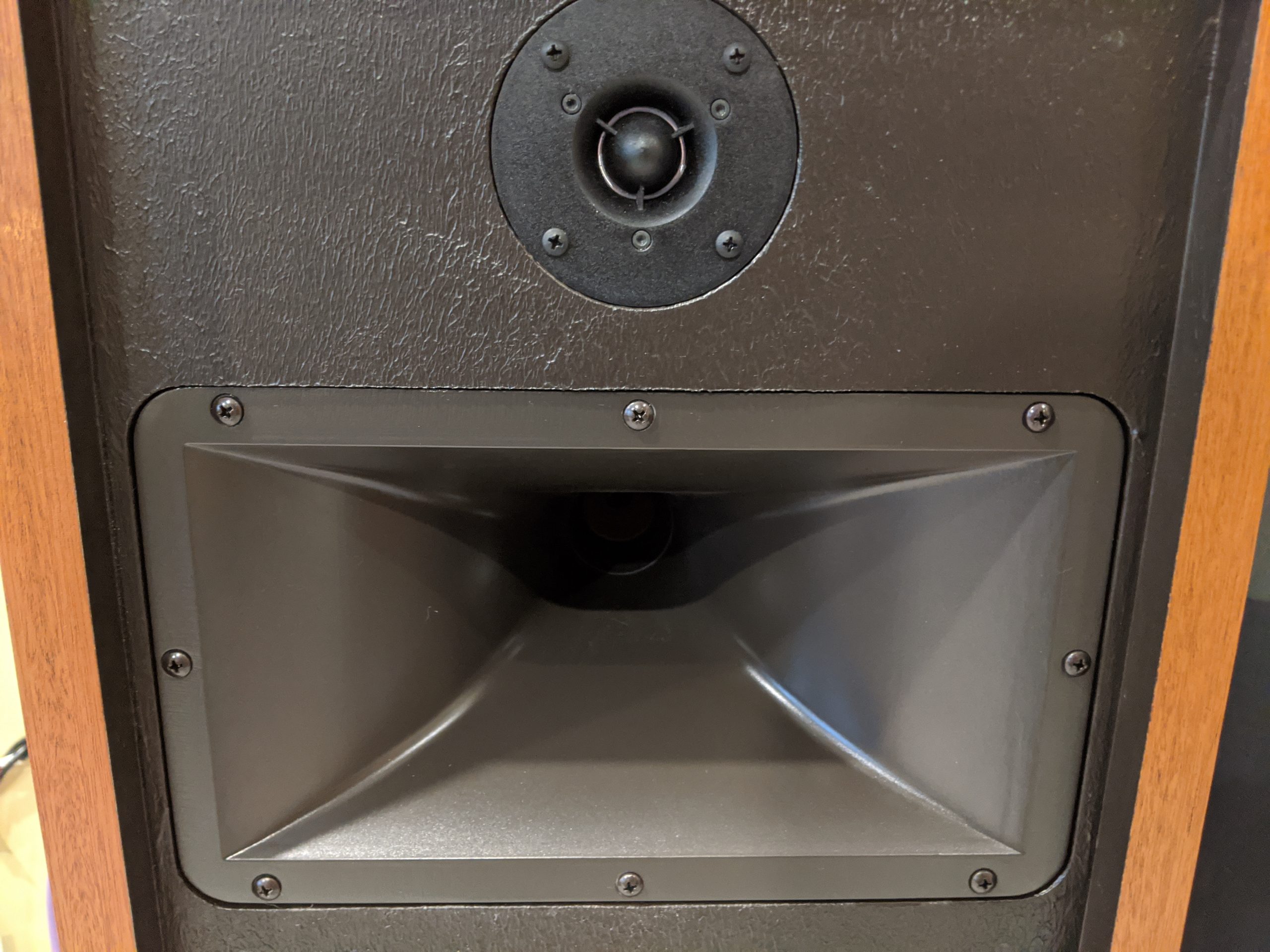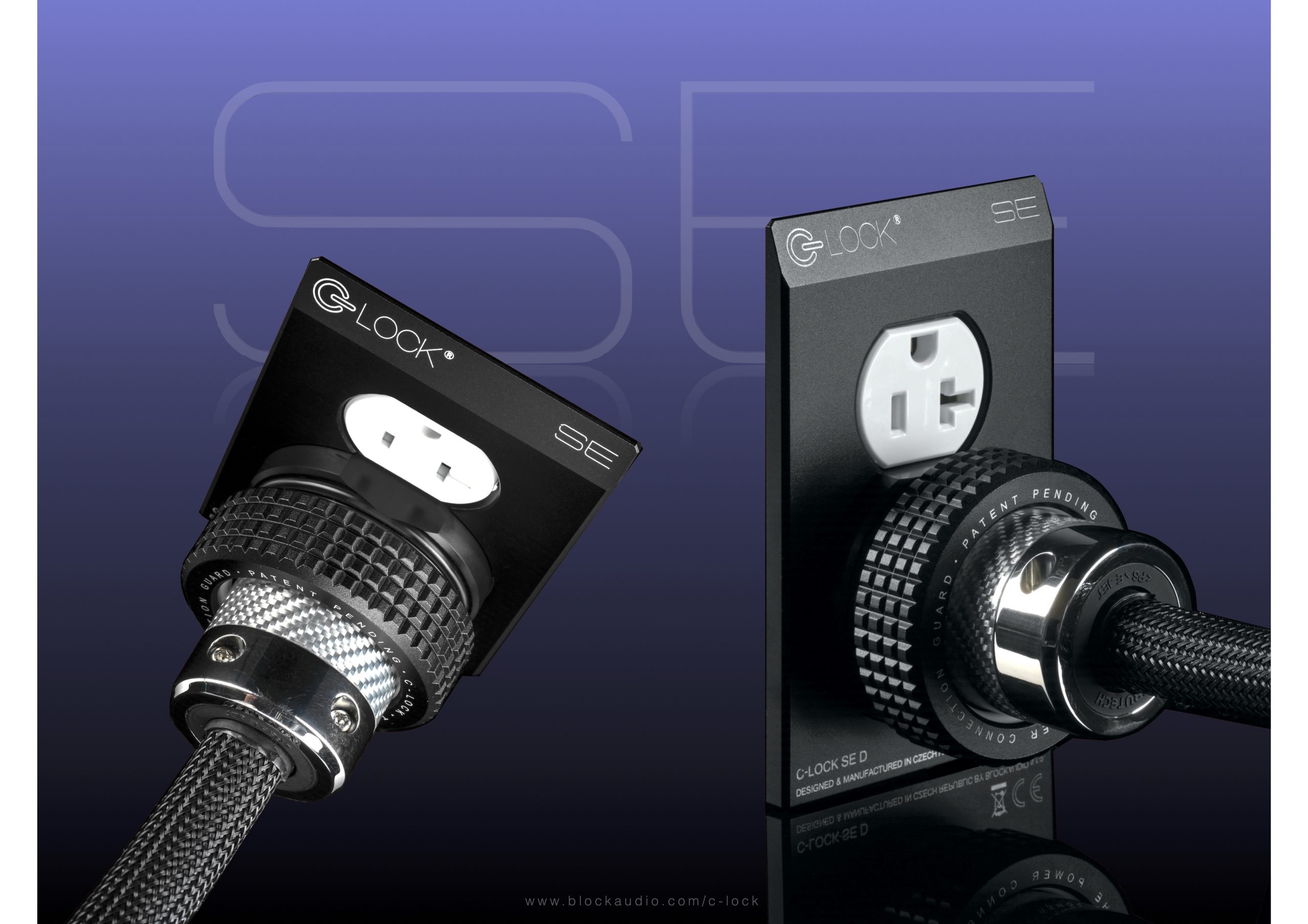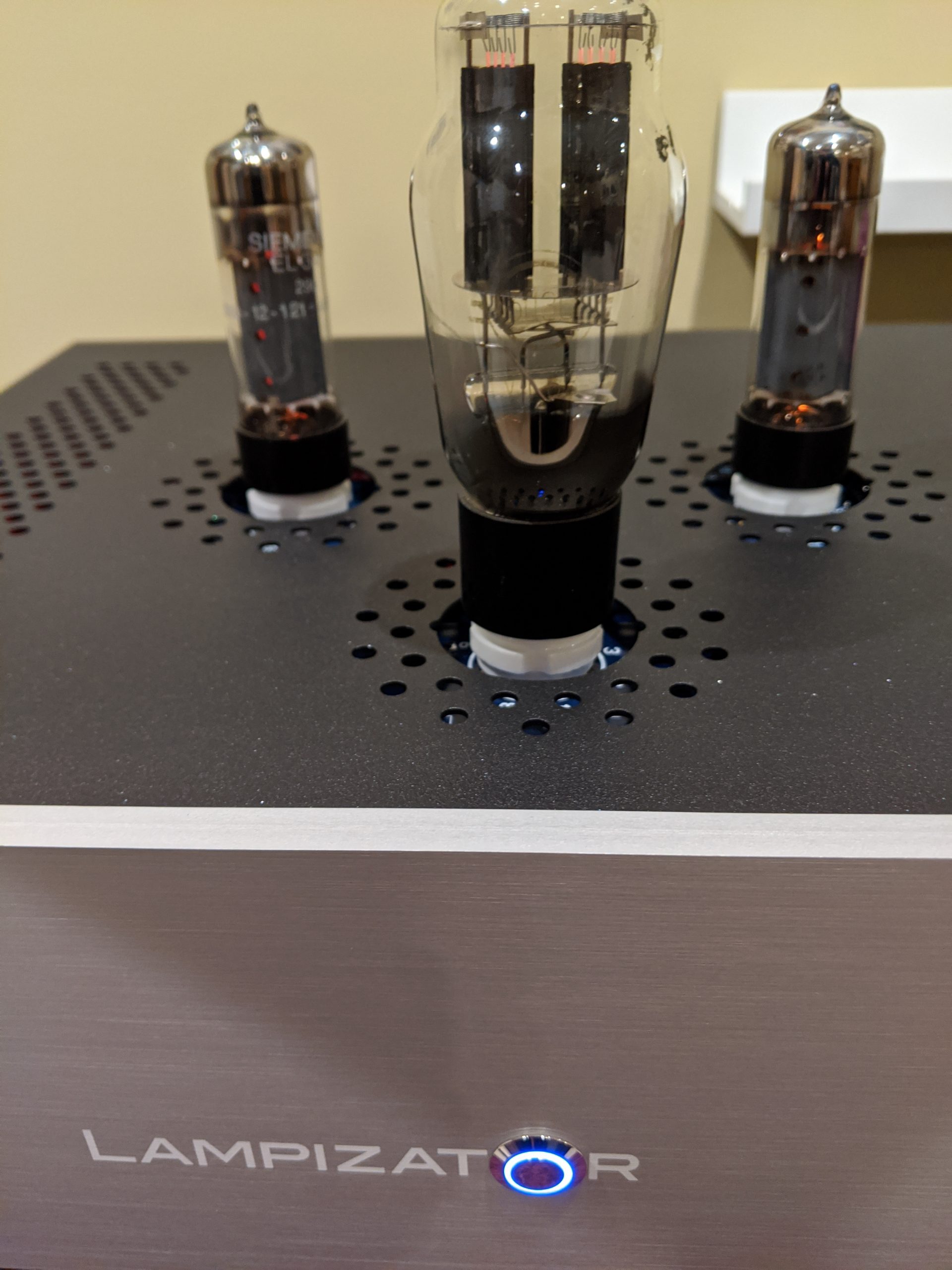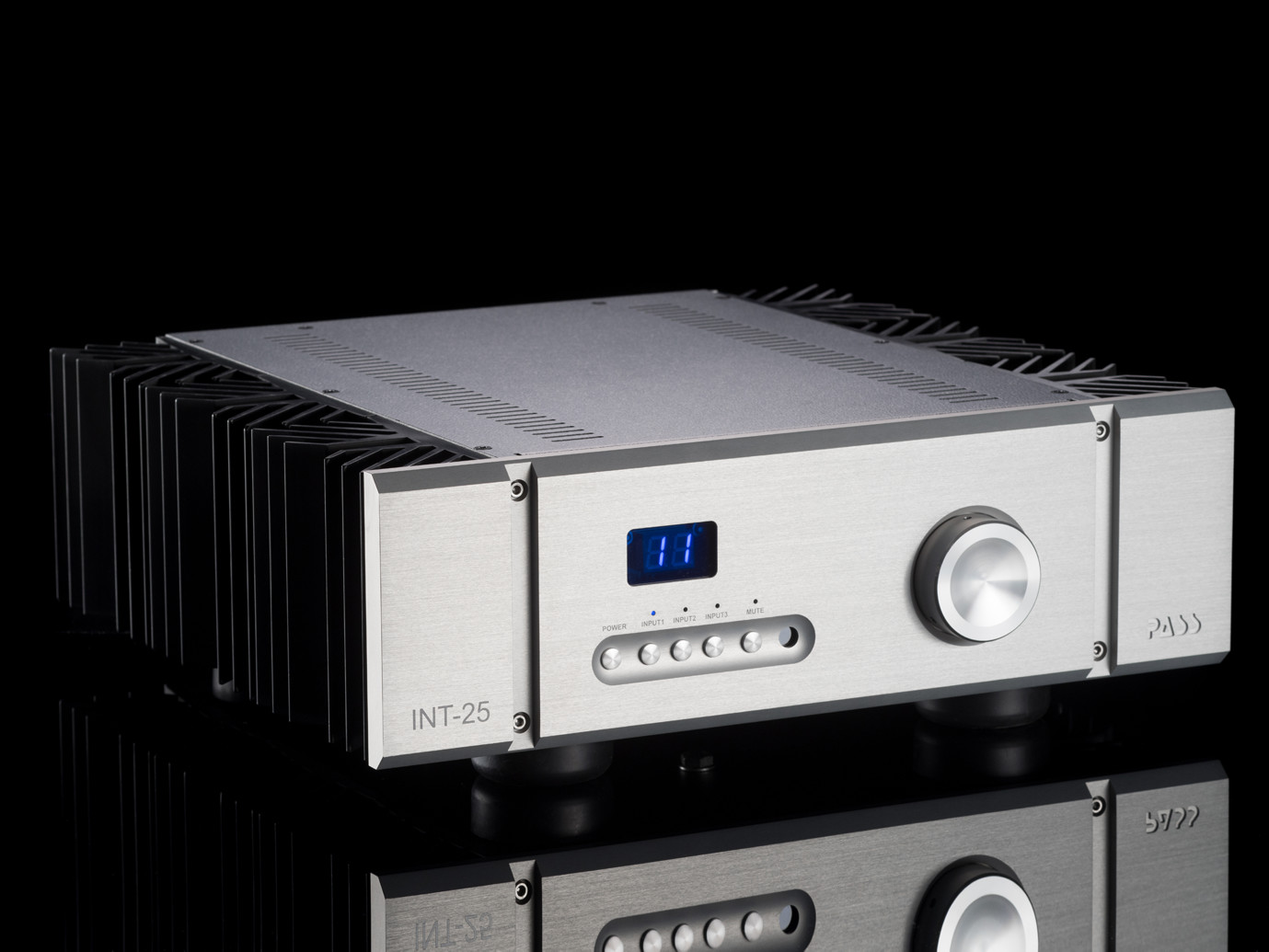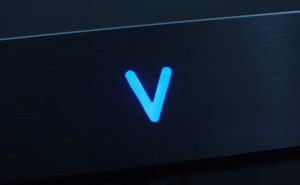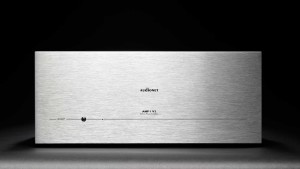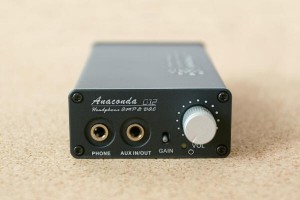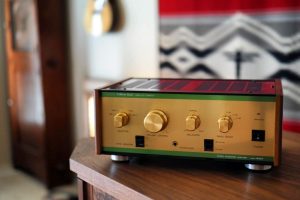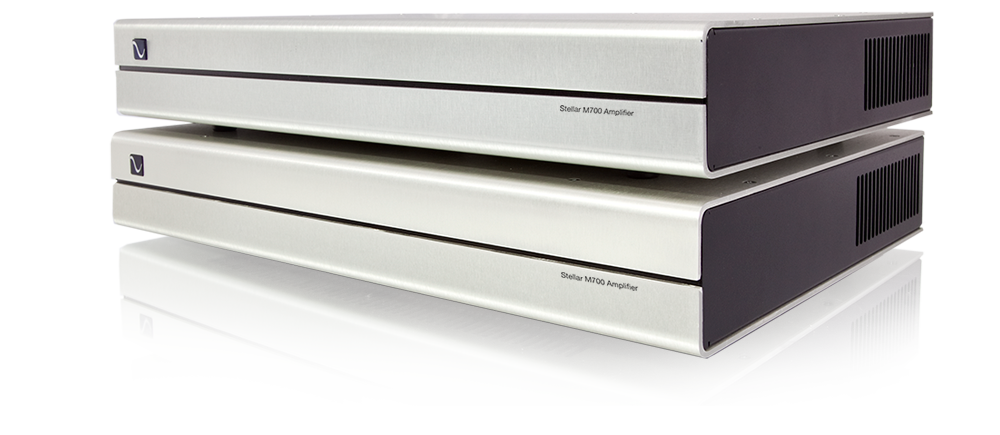
Enter Stellar…
Early last year, PS Audio introduced a new line of audio components. Dubbed Stellar, the initial line includes the Gain Cell DAC/Preamp, the S300 Stereo Amplifier, and the M700 monoblock amplifiers. I caught wind of the Stellar M700 while at AXPONA 2017. Always on the prowl for reasonably priced, high-end audio components, I decided then that I needed to review them. Having owned or reviewed several Class D amp designs, I've always been impressed by their excellent sonics, relatively low price, and (generally) smaller form factor. And while the Stellar M700 are not inexpensive at just under $3k per mono pair, they deliver a lot of high-end performance for the price.
Build
The Stellar M700 are fully balanced, ultra-linear high current amplifiers based upon a Class D ICE module amplification stage. Each amp pumps out 350 watts per channel into 8 ohms (doubling to 700 watts into 4 ohms), with very low levels of distortion and noise. In operation, the M700 are totally silent when no music is playing, and never get much more than slightly warm to the touch. In addition to the output stage, the M700 also use ICE switching power supplies, which (paraphrasing PS Audio Development Engineer, Darren Myers) use multiple stages of passive and active filtering circuits that when combined, reject high frequency noise much more effectively than linear regulators.
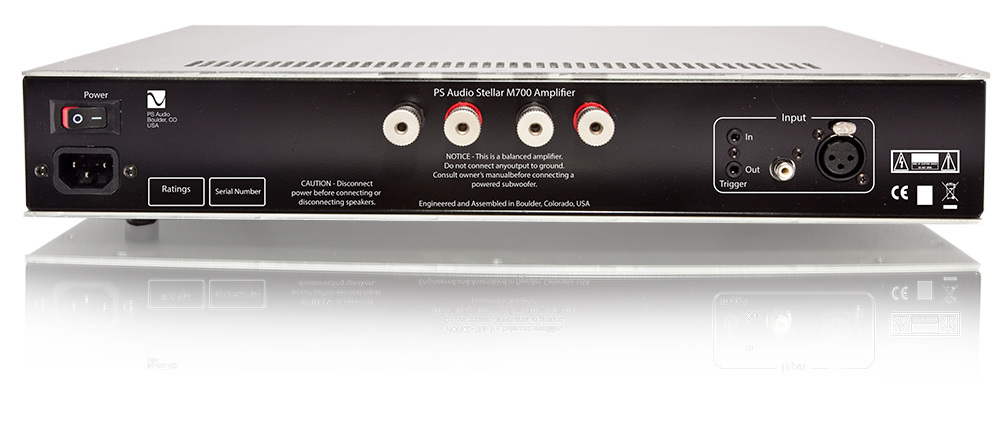
Housed in sleek, modern, full-sized casework, each mono amp weighs in at a svelte 13 pounds, and at only 17" wide, 3" high, and 13" deep overall, when stacked, two monos take up no more vertical space than many of the larger stereo solid-state amps. On the rear there is an IEC power inlet, main power switch, DC Trigger, RCA single-ended input, XLR balanced input, and two sets of speaker terminals for bi-amping. The front has a single lighted logo push-button which switches the amp from standby to on, and by flashing, notifies the owner of its operational state. The M700 have an extensive array of protection circuits, and I found out just how sensitive they are when one particular RCA interconnect with a loose barrel kept kicking off one amp (or perhaps just ticking it off). At any rate, there is no funny bidness allowed; if the amp senses a potential detrimental condition, it simply won't play. After tightening the offending cable's connector, I restarted the amp, and had zero issues for the remainder of my review. It is nice to know M700 won't tolerate a problem that could cause a failure. I've had that failing experience, and you don't want it. Duh.
The Analog Cell Input Stage
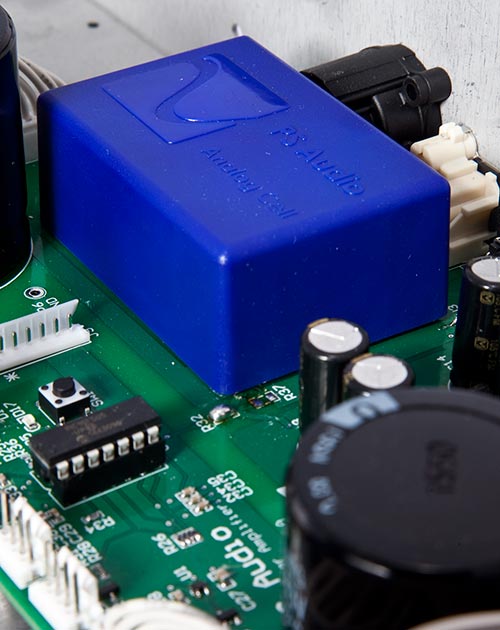
A partial description from the PS Audio website: "The Analog Cell is a zero feedback, balanced, Class A, MOSFET input stage. The design closely mirrors the sonic characteristics of a vacuum tube..."
Class D amplifiers used to be regularly knocked for lacking musical passion. But that was long ago, and switch mode amplifiers are no longer musical precisionists devoid of emotion. PS Audio is not the only audio company coupling a custom input stage to a Class D amp module; so I asked PS Audio's Darren Myers about his approach to designing the Analog Cell input stage for the M700:
GB: Are there other MOSFET Input stages driving Class D amps in the marketplace?
DM: There're many amplifiers that have MOSFET input stages. What makes this amp special is the synergy between the ICE Power module and our input stage. We spent a lot of time listening and tweaking in order to minimize tonal coloration. In the end, it's not the use of MOSFETs but the overall circuit and component implementation that contributes to the input stage's sonic performance.
GB: What type of sonic signature were you trying to achieve with the M700?
DM: I was certainly going for transparency and openness. I've had a desire for years to produce a class D product that could get out of the way of the music and present recordings without audible colorations. Most class D amplifiers have severe shortcomings such as a 2D soundstage, lack of precise imaging, rolled off treble extremes that lack proper decay, and a greyish midrange that has an audible hardness. The end result is a lack of musical engagement that well designed linear amplifiers have in spades.
Paul and I listened to the best and most well regarded modules on the market and the ICE Power really stood out. They nailed this newer series and not only do they sound very good, they have some measurable qualities that stuck out to me as best I've ever seen in a switch mode amplifier. With audio, sometimes it's not just a matter of measuring things, it's interpreting the measurements so that you can better understand how certain aspects add audible distortion.
Even though the ICE Power was the best out of the modules auditioned, there were still some issues, mainly regarding the midrange. I used the input stage to create a synergistic combination of tonality that caused the midrange to increase in richness and depth. The soundstage also became deeper and better defined. After a lot of modifications and listening, Paul and I had a long listening session and both of us were totally engulfed in the music. We both knew then that we had accomplished the goals of the project. The amplifier had gotten out of the way of the music, allowing the Infinity IRS V to convey music in a fully engaging and realistic way.
Sound
While awaiting my turn with the M700, I sold my stand-alone preamp. With monoblock amps in the review queue, that was not one of my finest decisions. Thankfully, I had a backup plan. With PS Audio's blessing, for this review, I drove the M700 amps directly from the preamp section of my reference PS Audio DirectStream Junior DAC. I used both single-ended and balanced inputs during my review, and while both provided very good sound, I found using Triode Wire Labs XLR interconnects yielded a small, yet perceptible improvement in resolution over single-ended ICs.
The DirectStream Junior's preamp running Huron firmware provided excellent sound; lively, dynamic, and resolved. It was a very pleasing combination with which to listen. Clarity and frequency response were terrific. Tonality was realistic, and treble sparkled with crispness. The high damping factor of the Stellar amps controlled the woofers in my Von Schwiekert Audio VR-35 loudspeakers with a tight grip. Bass notes were lightning fast and highly resolved, with a serious grunt that could be felt deep in my gut; sorta like eating two bowls of ice cream with Jaco Pastorius. Hell yeah. (Had to check if you were still awake.)
Dynamically, the amps can drive the paint off the walls with quick and decisive crescendos. Even micro changes leap from the spooky-quiet background with power and detail. And although the 700 have serious muscle on tap when needed for dynamic peaks, they really had a deft, almost soft touch much of the time, never overpowering the music just because they can. I really couldn't believe they had such staggering power available until it was called upon, and when that happened, the M700 showed some fangs with big-time power reserves.
Staging was very good; wide and fairly deep, and imaging was excellent, with a believable sonic picture of appropriately sized musicians. In my room and with my gear, musical performances were upfront and centered, with the stage starting at the front plane of the speakers and extending more toward the listener than to the wall behind. The tone and texture of instruments and voices is better than I've heard in price-comparable Class D, adding a little richness, not just to the mid-range, but throughout the frequency spectrum. Low level resolution, detail, and bass performance are attributes that can be found in many Class D amplifiers. The M700 add a smooth, natural, and liquid mid-range, as well as a finely extended treble. After listening for a while, I decided the sound signature of the M700 does indeed mimic many of the positive traits of tube musicality. And although it would be correct to say this wonderful mid-range gives the Stellar a vividly engaging sound, they do not smooth the way with a golden glow. In fact, I believe it would be more correct to tout them as amps that let the music do the talking, because, yep, it was my experience that is exactly what they do best.
Closure
Since this was my first home experience with ICE amp modules, I do not know how much of what I heard was due to their presence as the output stage, but I'm betting the Analog Cell input stage is the key contributor to the M700's sonic signature. I wish I'd been able to hear the M700 monos with a dedicated preamp, like PSA's own Stellar Gain Cell or even better, the flagship BHK Preamplifier. And keeping with that line of thinking, while very good, I'm betting the DSJ is a way better preamp partner now that I have PSA's latest firmware, Redcloud (HERE), installed.
In the Stellar M700, PS Audio has designed excellent sounding mono amps that can be the foundation of a reasonably priced high-end audio system. The analog input section is as expansive and natural sounding as the ICE amp modules are powerful and accurate. The resulting sound is a wonderful balance between expression and precision, allowing the amps to disappear within the audio chain. They clearly take on the signal they are fed, allowing a great front end to weave its audio magic. The Stellar M700 monoblocks blend the near-universal positives Class D has become known for; efficiency, high power, and solid bass performance; with at least one quality that I'd never heard so wonderfully presented in a switching amp in this price range; tube-like natural warmth without the tubes.
PS Audio M700 Monoblock Amplifiers
Retail: $2998
PS Audio
4826 Sterling Drive
Boulder, Colorado, 80301
720.406.8946
M700 Mono Specifications
- Unit Weight: 13 lbs
- Unit Dimensions: 17" x 3" x 12" Chassis only. 13" deep including connectors.
- Shipping Weight: 16.5 lbs
- Shipping Dimensions: 22"x 8" x 17"
- Color Options: Black, Silver
- Voltage Options: Factory set only, Japan 100V, North America 120V
- Europe/Asia/Australia/New Zealand 230V
- Mains Power Inputs: IEC C14
- Accessories Included: US (NEMA 5-15P) (all versions)
- Schuko (CEE7/7) (230V version)
- UK (BS 1363) (230V version)
- Audio Inputs: RCA (Unbalanced) and XLR (Balanced)
- Speaker Outputs: M700 Copper base nickel plated binding posts (2 pair)
- Other: DC Trigger Input 3.5mm 5-15VDC
- Warranty: 3 years parts and labor
- Signal Gain: 30.5dB +/-0.5dB
- Sensitivity for rated output power: 1.01V
- Noise: 1kHz@300 Watts <-100dB
- Input impedance: M700 Unbalanced 50KΩ/Balanced 100KΩ
- Output Impedance: 50Hz, 2.8VRMS <0.007Ω
- Damping factor: 50Hz. 2.8VRMS, 8Ω >1100, 4Ω >550
- Frequency Response: @2.8VRMS, 10Hz – 20KHz +/- 0.5dB, 10Hz – 50KHz +0.1/-3.0dB,
- THD&IM: 1KHz, 1W/4Ω <0.02%, 10-20KHz, 1W/4Ω <0.02%, 10-50KHz, 1W/4Ω < 0.05% (90kHz BW), 1KHz, 37.5W/4Ω < 0.01%
- M700 Mono Amplifier Output Power 20vac mains, 1kHz, 1% THD, 8Ω 350W minimum, 4Ω 700W minimum, 2Ω
- Stable for musical transients




